Barrel is about 38 inches, and bore has well defined rifling and about 3/8 in diameter.The Rifle has 23 inlays.
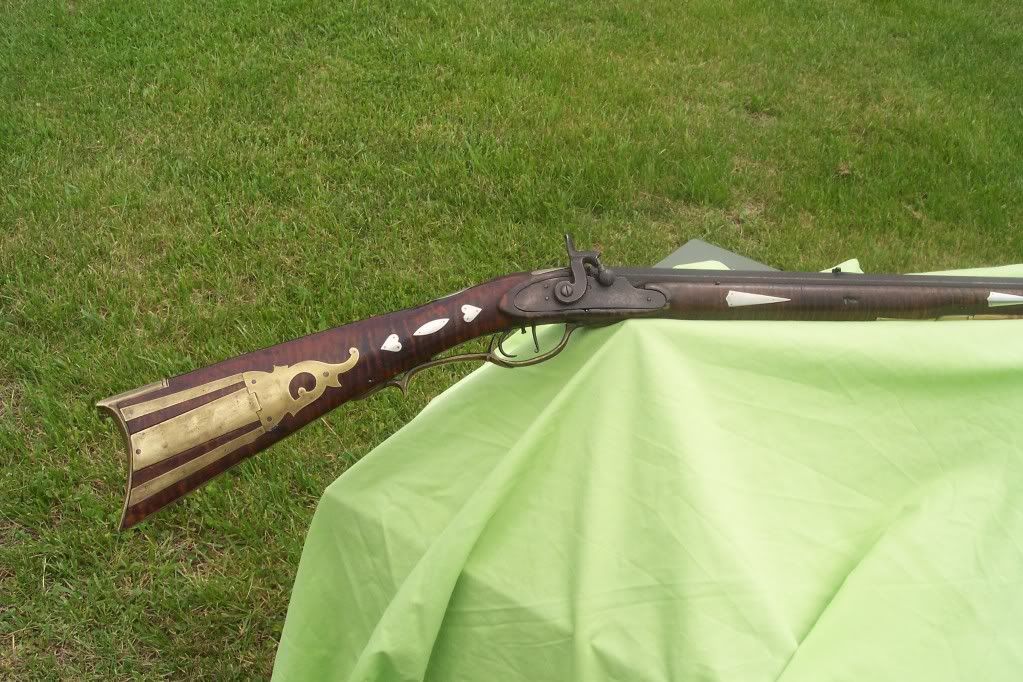
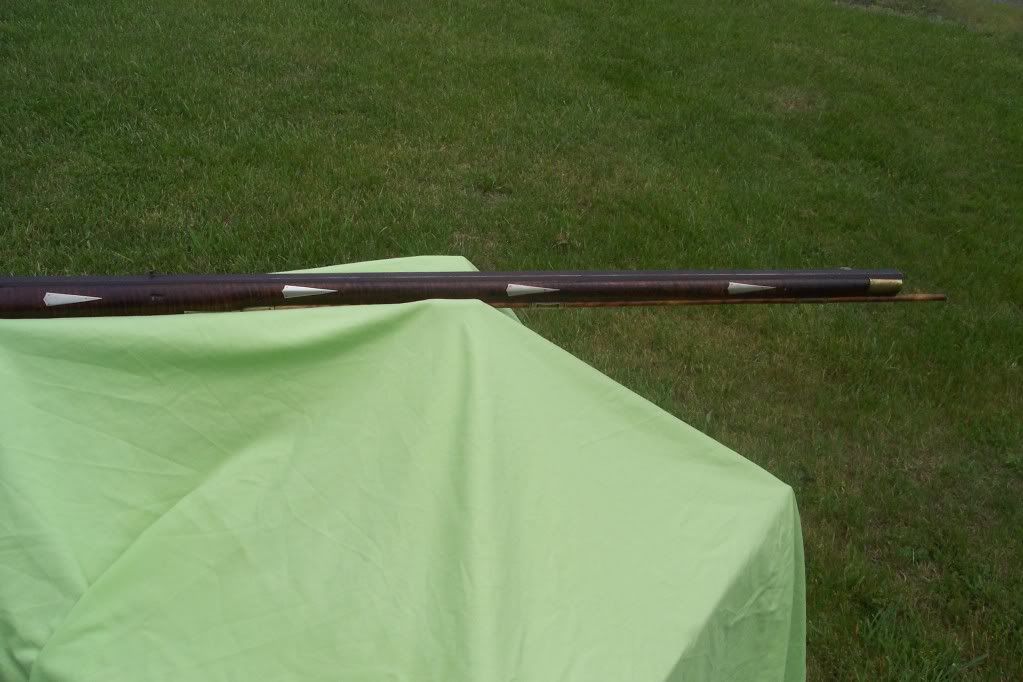
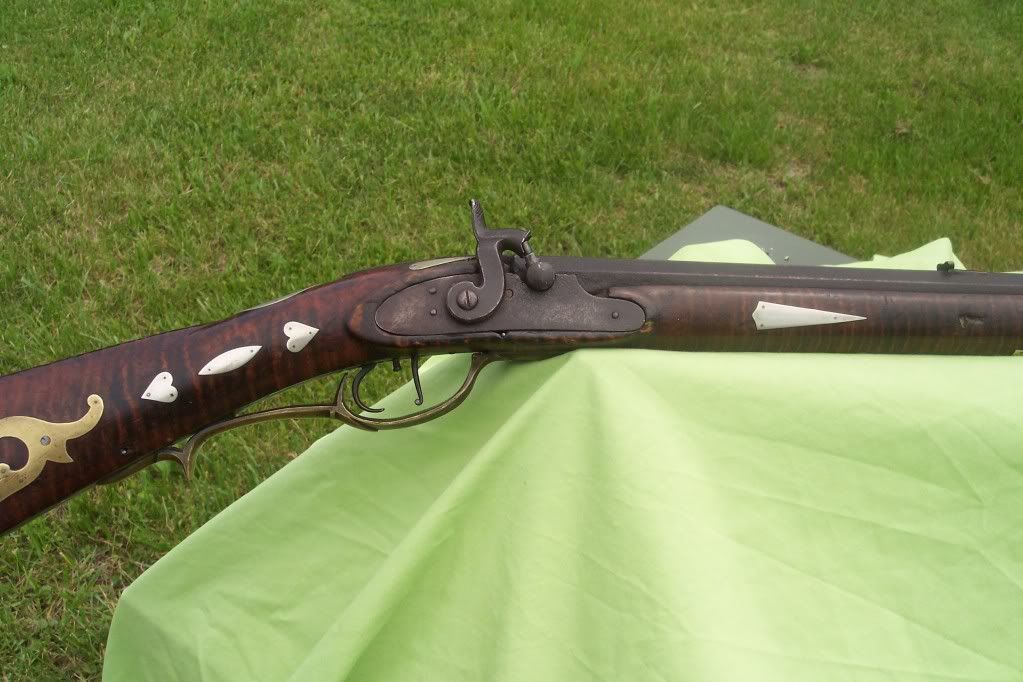
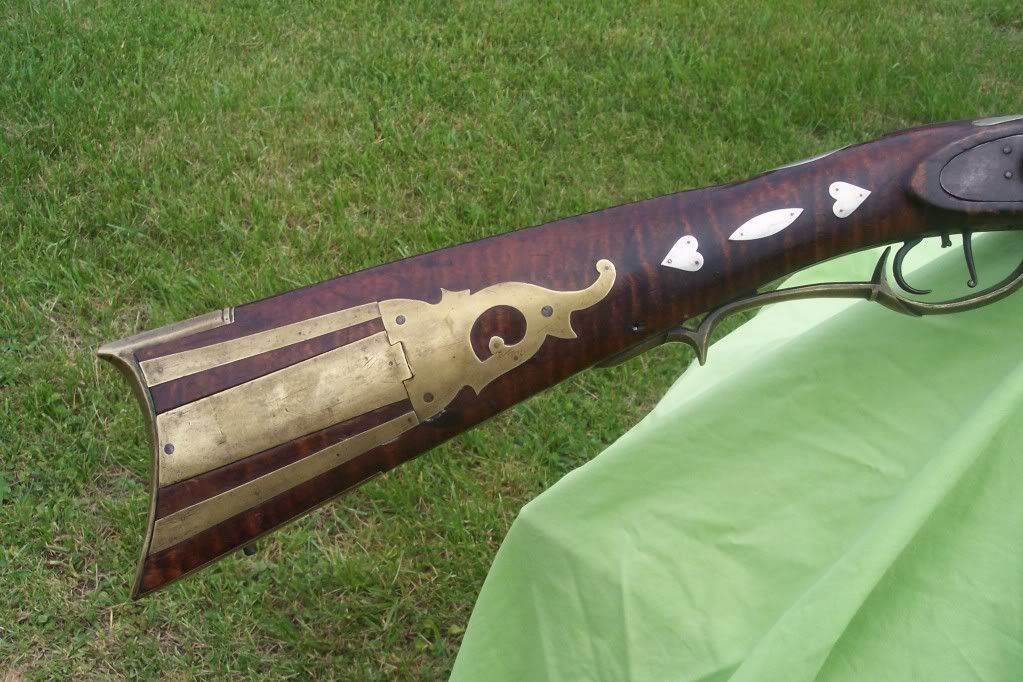
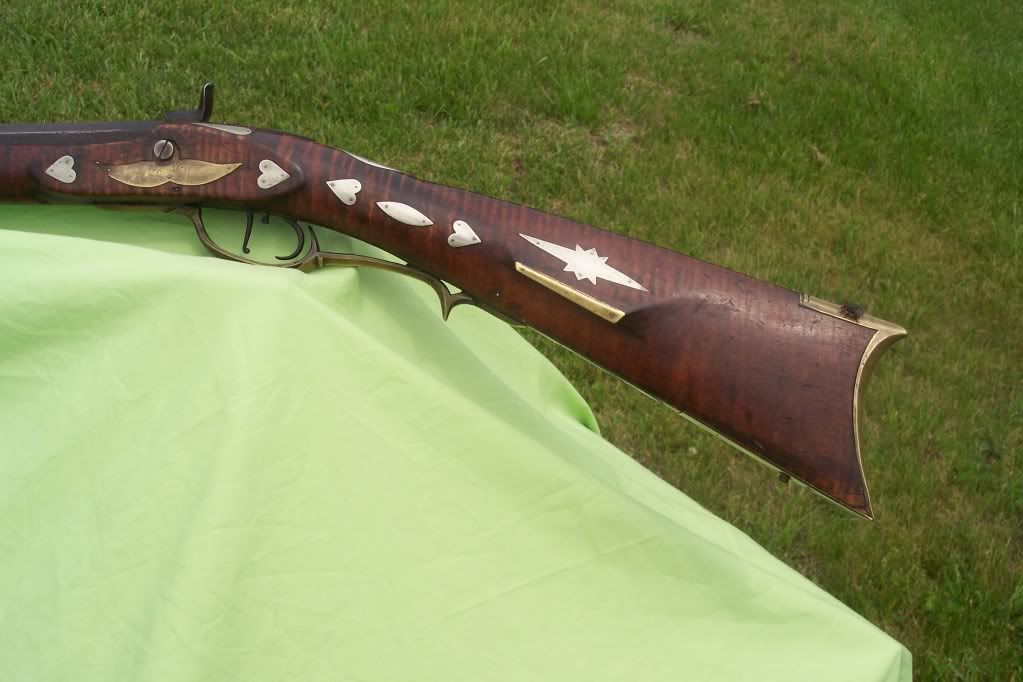
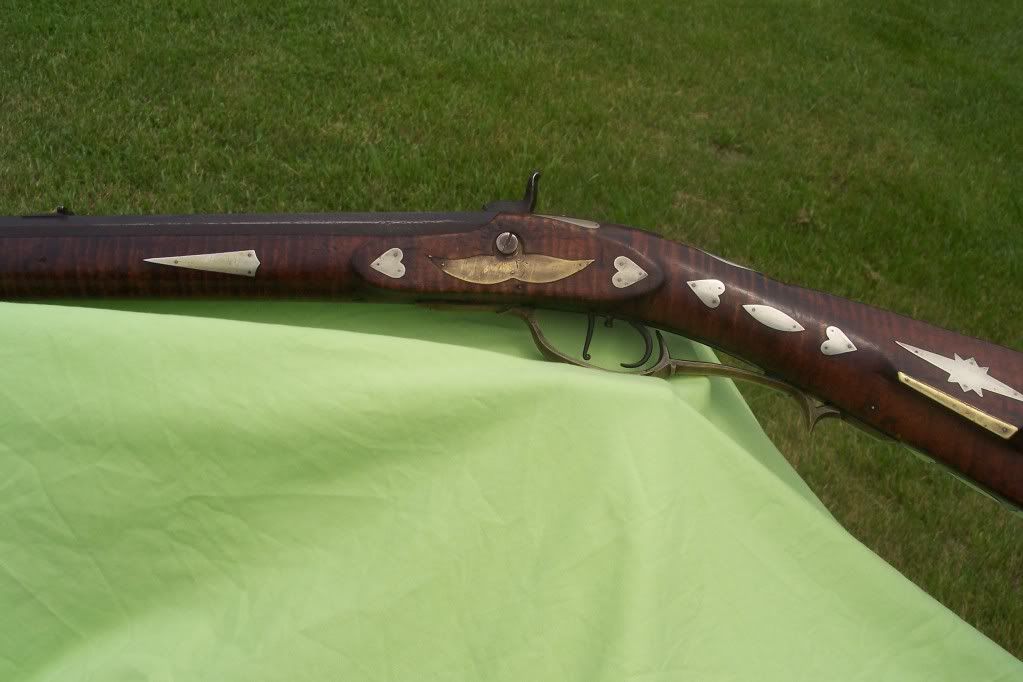
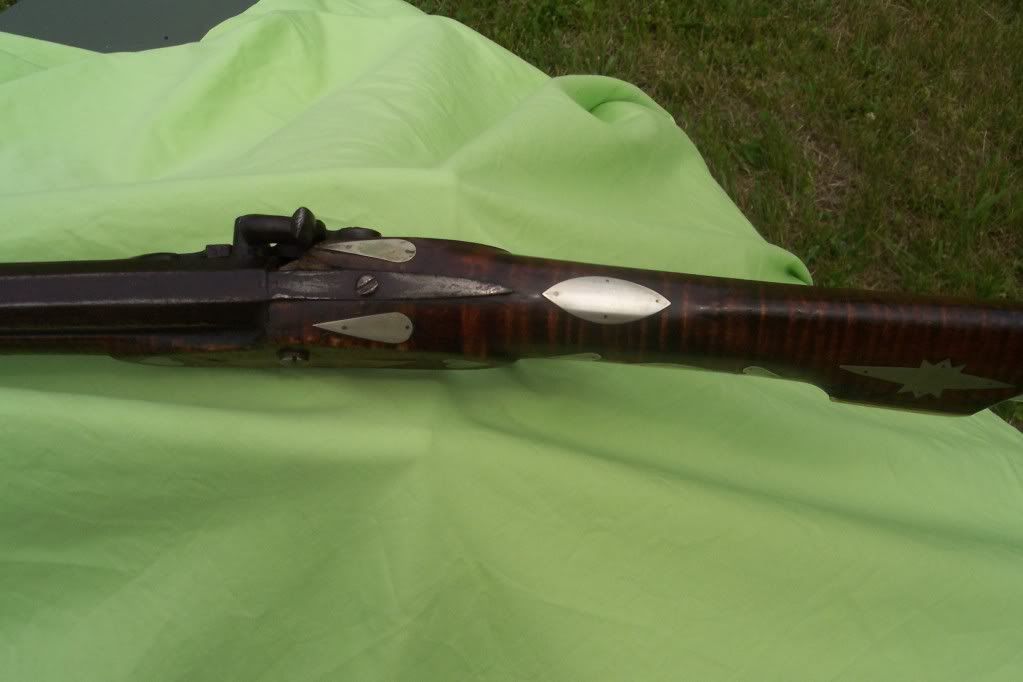
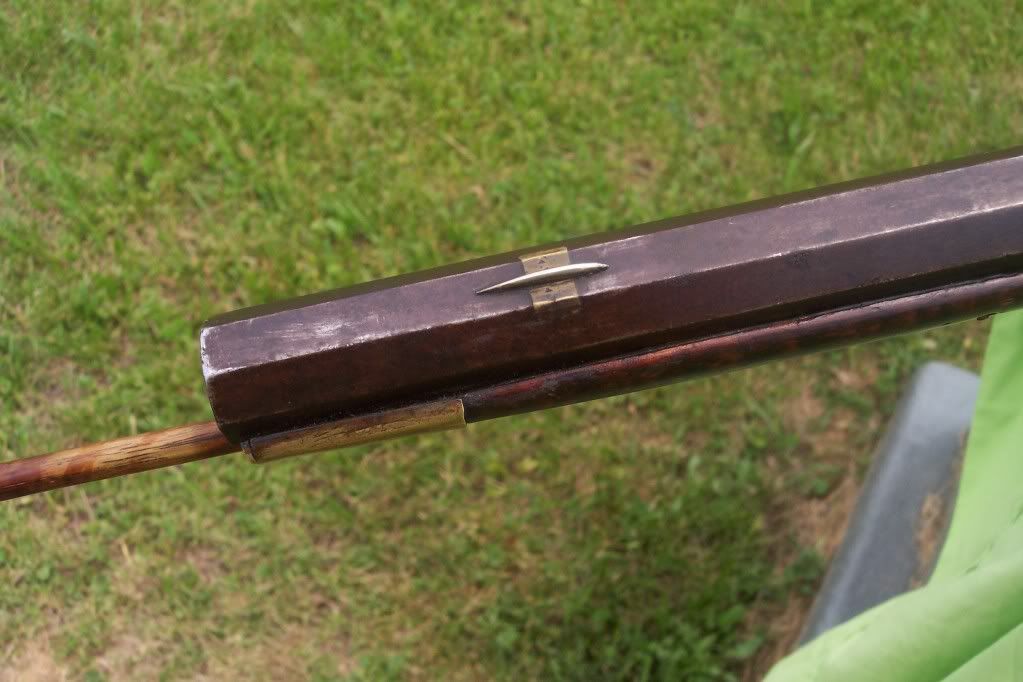
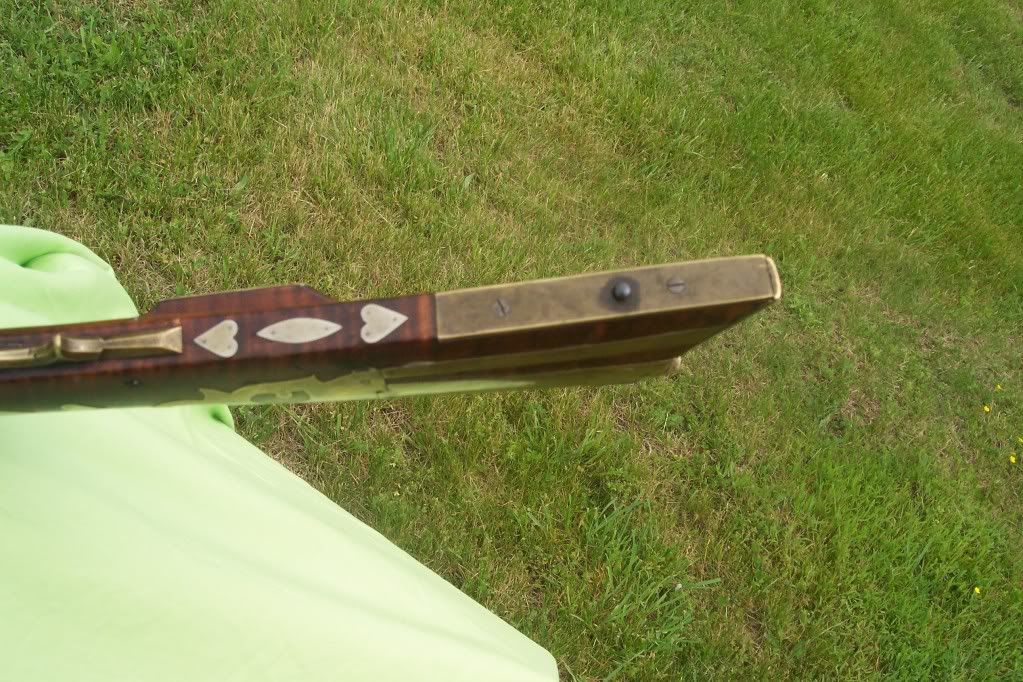
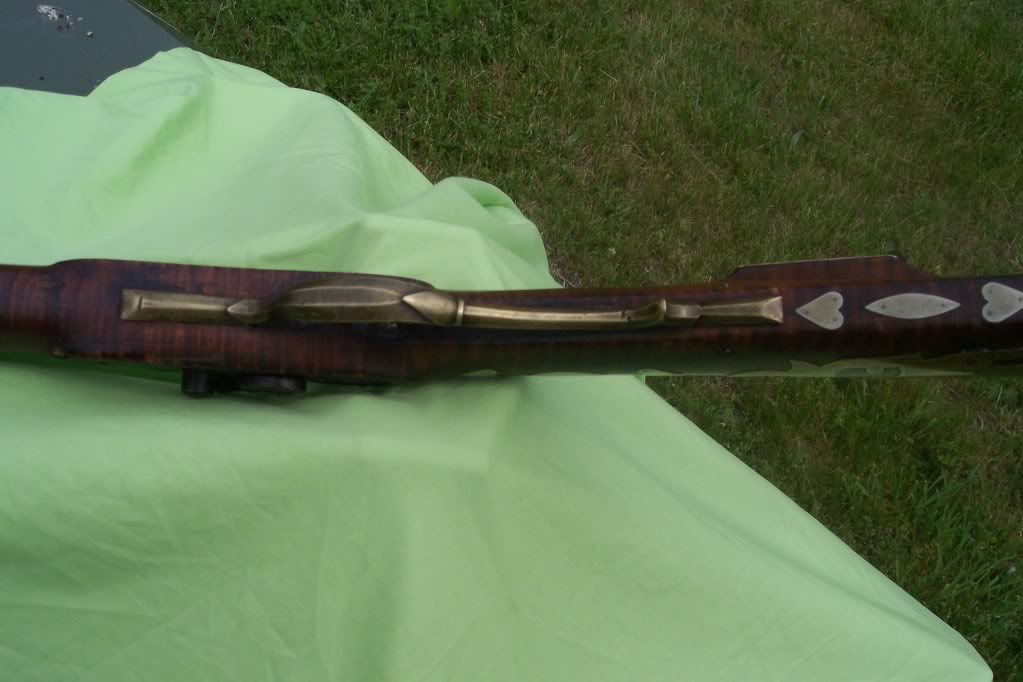
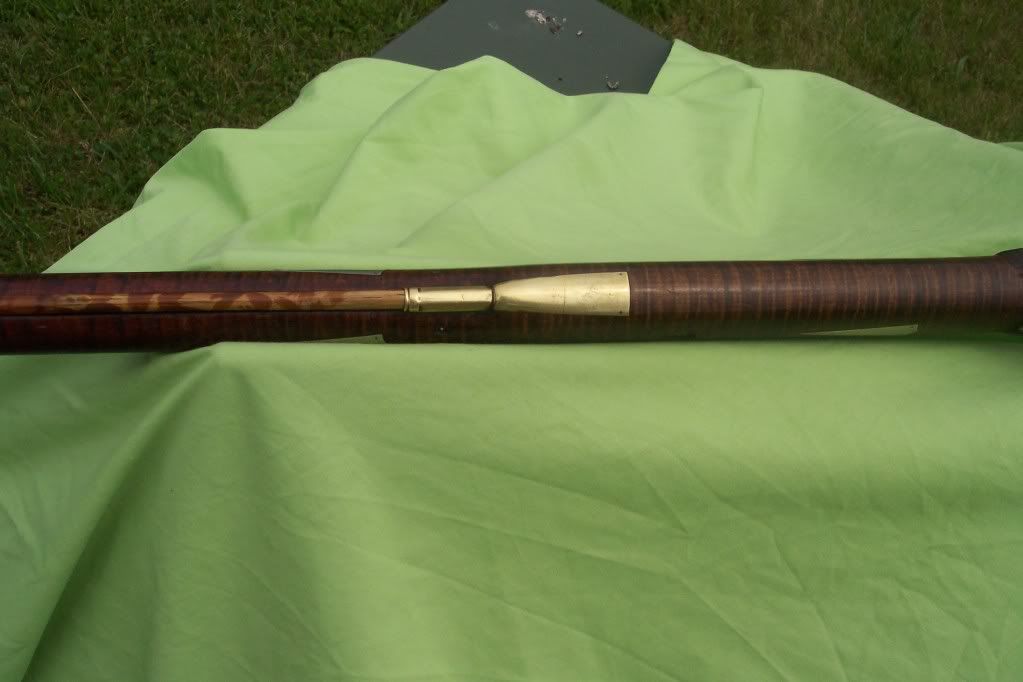

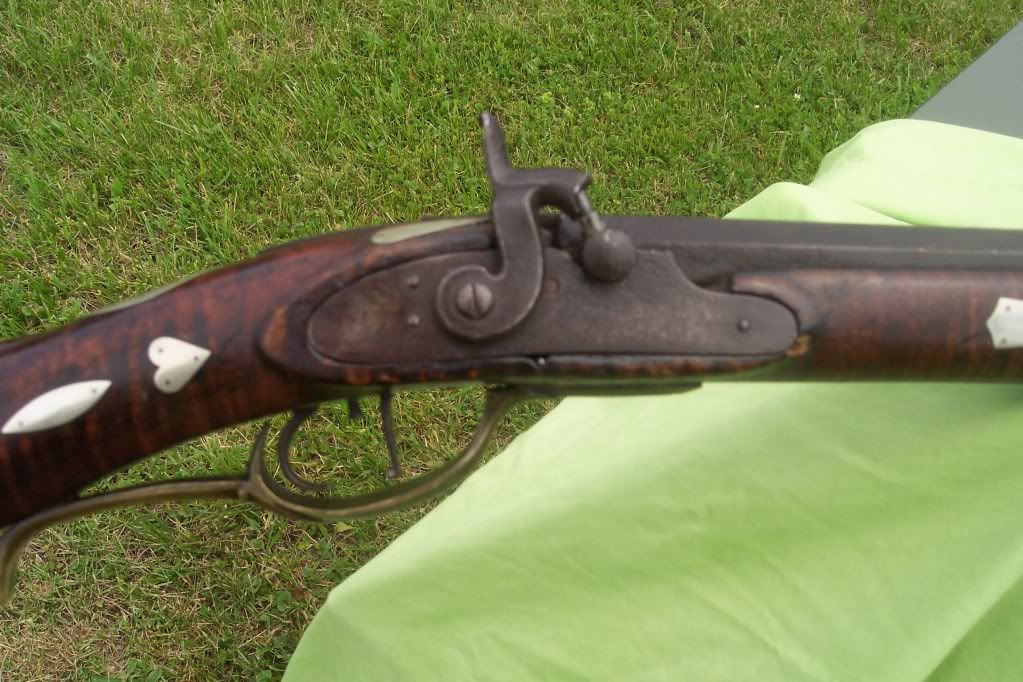
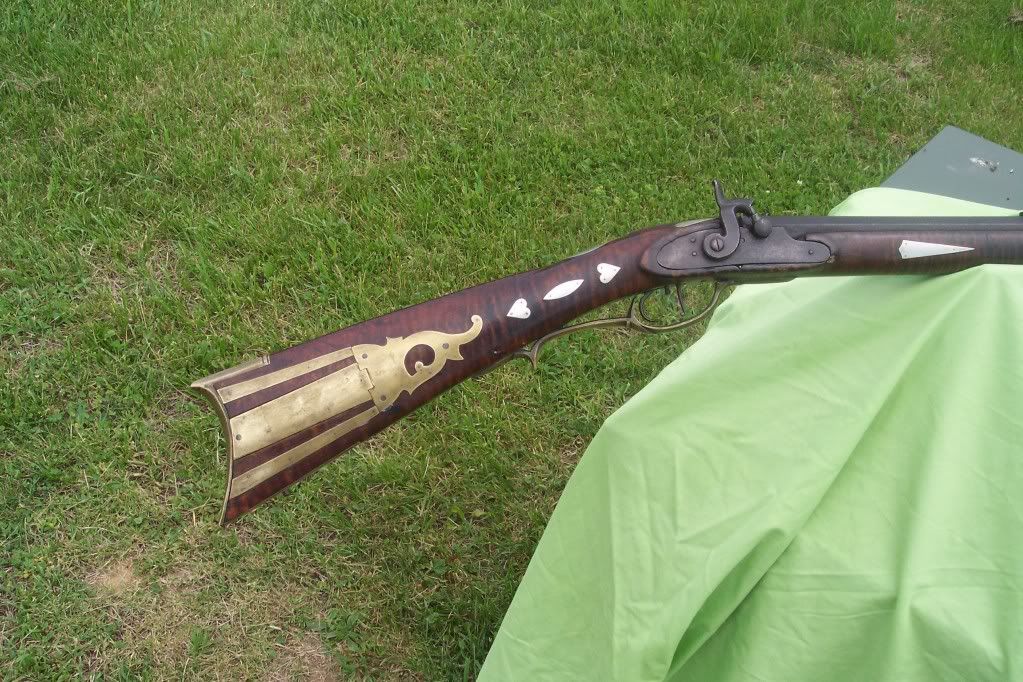
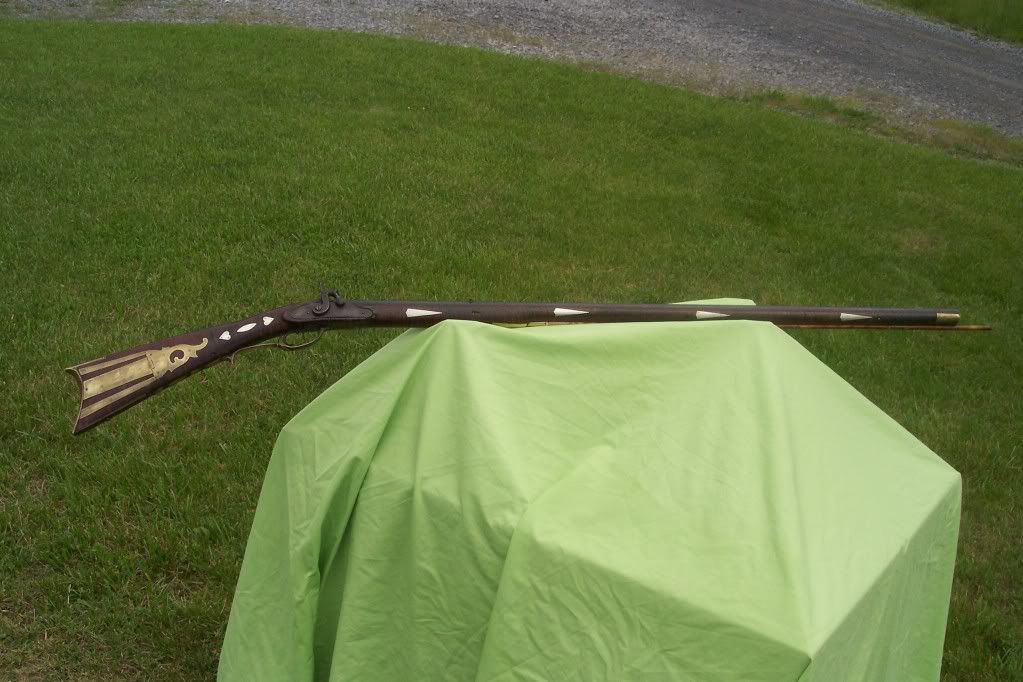
Comments:
I will write my response in a step-by-step fashion to provide a teaching tool. I don't feel entirely confident in the end result, but perhaps someone else could use this framework and add/subtract to it and come to a better conclusion. Perhaps we could improve on it and use it as a model for future unsigned guns.
1. Start with three basic premises, which too many individuals skip: You will never know for sure, never say never and don't let your knowledge/hopes overcome the raw evidence.
2. Look for common features from schools that you know. I will start with the disclaimer that I study and "know" the Upper Susquehanna and Huntingdon schools the best. Of course, there are several options to conduct research on schools that you may not be as familiar with, but they should not be overlooked. Here, there are several common features. In my opinion, the straight stock leads one toward Huntingdon County, Pennsylvania or western Pennsylvania. The patchbox is similar to a later Upper Susquehanna style. The mustache sideplate is very similar to a style consistently used by Charles Baum of New Berlin, Union County, Pennsylvania. The rear entry pipe is similar to a two piece style used in the Upper Susquehanna school. The inlays are similar to other Upper Susquehanna guns, including the hearts and ovals, star cheek inlay and the forestock inlays are an interesting combination of shields and elongated tear drops commonly found on Joe Long rifles.
3. Look for noted dissimalarities. The hair trigger is not straight and turned like a Huntingdon County style. The stock does not have an Upper Susquehanna roman nose design. The ramrod pipes look mass produced, as compared to homemade Upper Susquehanna pieces. The push button patchbox release is not something that I would attribute to central Pennsylvania.
4. Carefully evaluate any information you have about the place of purchase or historic use. An estimated date is very helpful in this exercise. Careful is the key word, but it if you buy a piece from an old estate, where a rifle was located for an extended period of time, you may have some clues about place of production, especially if you look at the family's history and note where they lived during the estimated life of the rifle.
5. Theorize. I would stick my neck out there and possibly try to squeeze this into the schools I am familiar with, while never losing sight of other possibilities. My best "guess" would put this as a transitional Huntingdon County style rifle, with influences from the Upper Susquehanna. The most obvious example of a maker that would fit into this mold would be Peter Smith. He was listed in New Berlin circa 1800-1810, but later ended up in Mifflin and then Huntingdon County. I would find this as a very plausible theory, with a note of caution that several makers from this region ended up in Ohio and the midwest and without clear documentation and additional facts, one must always be open to that possibility.
6. Compare to known schools and makers, including a comparison with photos. Next, I opened Cooper's book, The Kentucky Rifle and Me, and compared photos with the photos above. I didn't find anything conclusive.
7. Analyze theory. I feel like I just went through the scientific method, but in some respects, it is quite beneficial. Looking at my above theory (hypothesis), I am not very comfortable with my earlier conclusion, but I still it is plausible and a reasonable argument. I would go through steps 5 through 7 again and look to Ohio and the midwest as my second "guess." With that said, I still feel fairly confident with my initial theory, but I am always open to suggestions from others.
___________________________________________________________
Refer to the William Lloyd rifle. Different inlays which would likely exclude the McConnellstown school, but the general architecture strongly suggests Huntingdon County. Butt and trigger guard are especially suggestive of such.
I wouldn't exclude a possibly more western point of manufacture. If so, then I'd be willing to lay odds on the maker having connections to the Huntingdon area.
Let's remember that the Huntingdon Co. of 1840 was much larger than it exists today. The subtle upper Susquehanna influences are undeniable in this fine rifle and should not be discounted.
I tend to analyze a bit less and maybe appreciate a bit more than some others here. Whoever built this rifle melded traits of two regions into an amalgam of fine features. What a tribute to his vision and ability.
Bottom line for me... Huntingdon Co. (Even if made in Illinois.)
____________________________________________________________
I see a something of Somerset County in this little rifle. The 'Q' in the PB finial, the profile and the triggerguard are all similar to those found in that school. It appears to be a pretty late gun given the side plate placement away from the lid, the short barrel and the coarse inlays with no engraving on the gun.
It could have well been made further west and would not be surprised if that proves to be the case. It is a nice example of a nice percussion era rifle and it should be placed in the Library.
____________________________________________________________
Looks Ohio-ish to me.
____________________________________________________________
I don't know where this rifle was made, but I would bet Ohio. An observation of mine about Ohio rifles is that they do not seem to have regional characteristics much beyond family gun smithing? Part of that may be that most of the Ohio rifles I have observed seem to be of a later period and a time change. Change is gun styles and also the impact of the immigration of gun makers from a wide variety of locals and the influences they brought with them. ie. Reminiscent patch box designs and architecture along with other small details.
The thin bases of my “bet” would be the PB finial that seems to get repeated with variants in other Ohio rifles and the Ohio-ish use of the multiple plain inlays.

